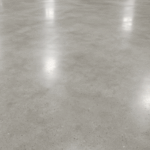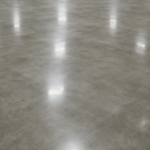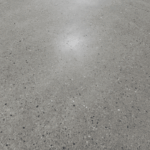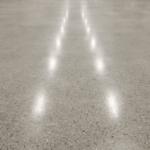Insulation under screed
- Home
- Insulation under screed
Insulation under screed: specialist knowledge on materials, structure & GEG [2025]
As specialists in modern floor constructions, we know: Insulation under screed is a crucial component for energy efficiency, comfort and durability. Correctly planned and installed screed insulation has a significant impact on thermal insulation, soundproofing and the stability of the entire floor. Find out the most important aspects of floor insulation under screed here, based on our expertise and the current requirements (as of 2025).
Core functions of screed insulation
Professional insulation under the screed fulfills several key tasks in the floor structure:
- Thermal insulation & energy efficiency: It minimizes downward heat loss, reduces heating costs and contributes to compliance with the strict GEG requirements (Building Energy Act). Good thermal insulation of the screed ensures comfortable floor temperatures.
- Impact sound insulation: Effective reduction of walking noise in accordance with DIN 4109. Good impact sound insulation under the screed significantly increases living comfort.
- Load transfer & compressive strength: The insulation layer must safely absorb the loads from the screed, floor covering and use. Choosing the right compressive strength of the insulation (e.g. pressure-resistant insulation for residential areas or higher loads) is crucial to avoid settlement.
- Moisture protection: A correctly installed layer (often with a moisture barrier screed) protects the building fabric, especially in the case of insulation on floor slabs or above basements.
Insulation materials for screed insulation
The selection of the optimum insulation material under screed depends on the project requirements: U-value, installation height of the insulation, compressive load, sound insulation and moisture. There is no general recommendation; the suitable insulation must be determined individually. Important parameters are the lambda value (λ) and the compressive strength (kPa).
(The table remains a valuable element for the user)
| Insulation material | Lambda value (λ) [W/(m-K)] (approx.) | Compressive strength¹ [kPa] | Fire behavior (Euroclass) | Type. Application note for under screed |
|---|---|---|---|---|
| EPS (expanded polystyrene) | 0.032 - 0.040 | 100 - 200 (DEO/DES) | E | Standard EPS under screed, cost-efficient, good thermal insulation |
| XPS (extruded polystyrene) | 0.030 - 0.038 | ≥ 300 | E | XPS under screed with high compressive load & moisture (basement, floor slab) |
| PUR/PIR (polyurethane/polyisocyanurate) | 0.022 - 0.028 | ≥ 120 | E (often B2) | PUR insulation screed for very good insulation with low installation height |
| Mineral wool (rock/glass wool) | 0.035 - 0.040 | approx. 5 - 20 kPa (as impact sound panel s')² | A1 (non-combustible) | Mineral wool screed insulation for excellent impact sound insulation, non-combustible |
| Soft wood fiber | 0.040 - 0.050 | approx. 50 - 150 | E | Ecological alternative, good sound & heat insulation |
| Foam glass | 0.038 - 0.050 | ≥ 500 | A1 (non-combustible) | Very high pressure load, vapor-tight, for special requirements |
¹ Observe compressive stress at 10% compression (CS(10) value) or permissible permanent compressive stress. Plan minimum compressive strength of screed insulation depending on load! ² The focus here is on low dynamic stiffness (s') for impact sound.
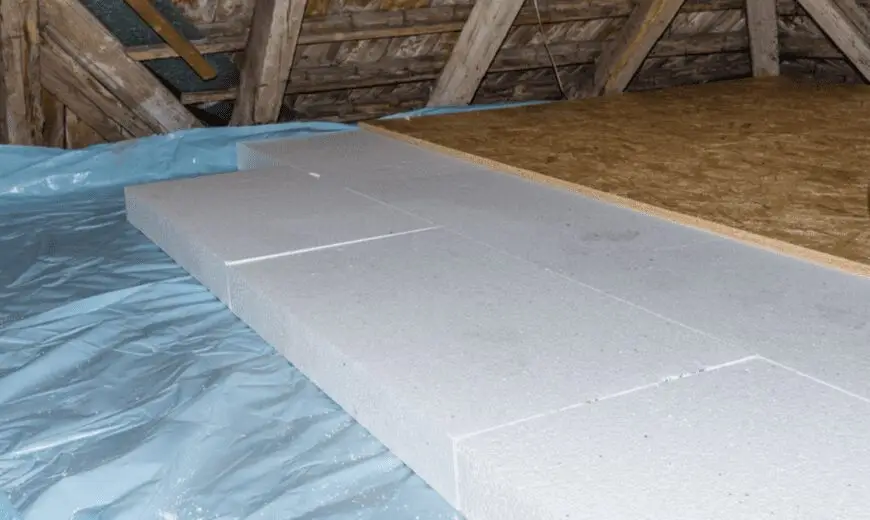
Understanding the characteristic values of screed insulation: U-value, pressure & sound
The following characteristic values of the insulation under screed are relevant for planning:
- λ value: Material property (lower = better insulating).
- U-value: Thermal transmittance of the entire component (lower = better). The U-value calculation for floors must meet the minimum requirements of the GEG. The thickness of the screed insulation is decisive here.
- Compressive strength (kPa): Important against subsidence. Wrong choice leads to damage.
- Dynamic stiffness (s' in MN/m³): Measure for impact sound improvement (lower = better).
- Fire behavior: Classification according to Euroclasses (A1-F).
4. coordination with the screed: cement screed, anhydrite & co.
The type of floating screed (e.g. cement screed, anhydrite screed/calcium sulphate screed, flowing screed) influences the requirements for the separating layer and the construction process.
Professional installation of insulation under screed
The quality of the screed insulation installation is crucial. Important steps:
- Create a level, clean surface.
- Lay the waterproofing on the floor slab or basement ceiling (e.g. bitumen sheeting, cold-welded sheeting) professionally.
- Apply edge insulation strips correctly - without gaps on all walls and supports.
- Lay insulation boards without gaps and in a bond. Stagger joints for multi-layer insulation.
- Carefully spread out the separating layer (usually PE foil).
- If necessary, install underfloor heating on insulation.
- Apply screed.
Avoiding mistakes with screed insulation: planning tips
Frequent sources of error are inadequate planning of the compressive strength, insufficient moisture barriers, faulty edge insulation strips (sound bridges!) or open joints. Detailed planning of the floor insulation is essential to avoid settlement and prevent moisture damage.
Costs of insulation under screed: How much does screed insulation cost per m²?
The prices for screed insulation per m² vary greatly depending on the material (EPS, XPS, PUR etc.), thickness and compressive strength. Expect material costs of approx. 5 €/m² (for simple EPS) to over 30 €/m² (for high-performance PUR/PIR or cellular glass). The decisive factor is the price-performance ratio in terms of technical requirements and durability.
Conclusion: Why correct insulation under screed is so important
Insulation under screed is an investment in the future of your property. It ensures energy savings, high living comfort through thermal and impact sound insulation and protects the building fabric. Long-term functionality depends largely on the right choice of material and professional installation. Rely on quality and expertise to avoid costly consequential damage - hiring an experienced specialist company for screed and insulation work pays off.
Frequently asked questions (FAQ)
No. Effective impact sound insulation requires a low dynamic stiffness (s') of the material. Standard thermal insulation boards (e.g. EPS DEO, XPS, many PUR/PIR) are often too rigid for this. Only special products (e.g. EPS-T, MW-T, wood fiber TSD) that meet the requirements for DES offer both.
The minimum requirements for airborne and impact sound insulation in building construction are set out in DIN 4109. However, higher sound insulation standards are often agreed by contract or due to comfort requirements.
Generally yes, as the elasticity required for sound insulation counteracts a very high compressive strength. However, there are impact sound insulation boards in various compressive strength and compressibility classes (e.g. DES-sg, -sm, -sh), so that suitable products are also available for higher loads. The selection must match the use!
It is calculated from the required U-value (heat transfer coefficient) for the building component (in accordance with the GEG or specific planning) and the lambda value (λ) (thermal conductivity) of the selected insulation material. Simplified formula: thickness ≈ lambda / U-value.
They decouple the floating screed from the flanking walls and thus prevent the impact sound from being transmitted directly into the walls as structure-borne sound(sound bridges). Without correctly laid edge insulation strips, the effect of the impact sound insulation board is greatly reduced.
